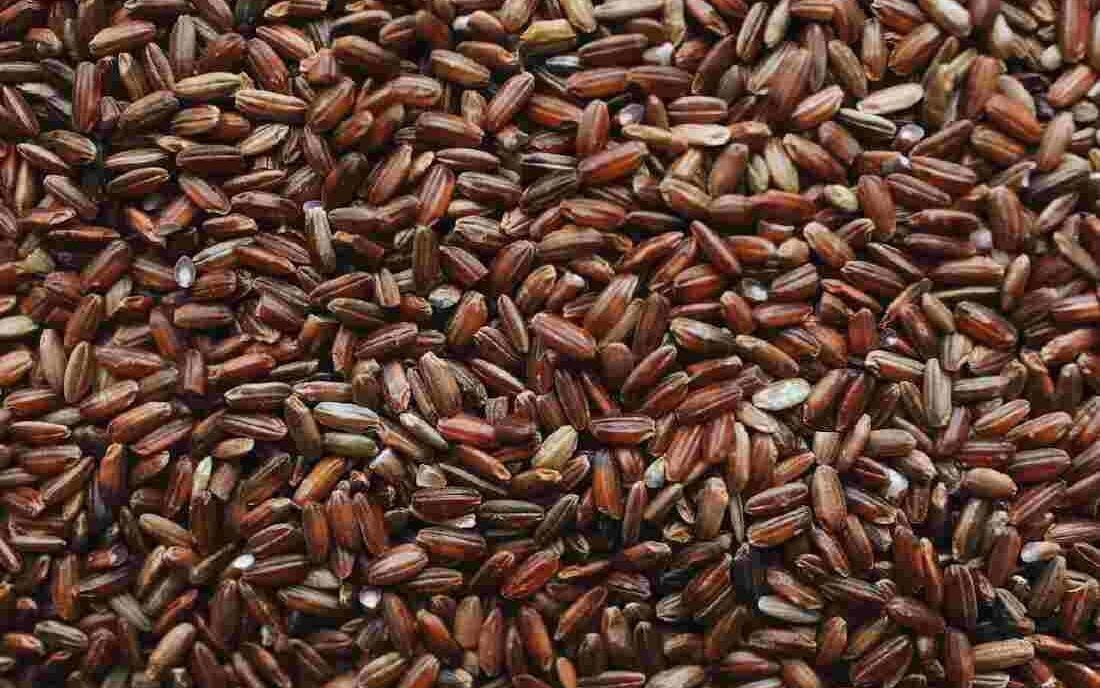Understanding the nutritional differences between white rice and brown rice requires comparing their calorie contents to white rice vs brown rice calories difference a lot. Calories represent the energy our bodies absorb from food, thus their content in our diet must be considered.
White rice, a refined alternative, is milled to eliminate the bran and germ layers, resulting in a softer flavour but also the destruction of vital components such as fibre, vitamins, and minerals.
Brown rice, on the other hand, which is a powerhouse of whole grains, keeps these layers, making it rich in nutrients. Due to the presence of the bran and germ layers, brown rice often has somewhat more calories when comparing the same amount of both varieties of rice.
The modest calorie difference is mitigated, however, by brown rice’s increased nutrient density, which supplies more important nutrients per calorie than white rice.
The calorie difference between the two grains has consequences for weight management, as picking the right grain can help you achieve your weight reduction or maintenance objectives. Furthermore, the nutritional richness of brown rice contributes to enhanced digestion, satiety, and potential long-term health advantages.
Page Contents
- The Reality of White Rice
- The Brown Rice Story
- A Caloric Journey | White rice vs Brown rice calories
- Considering Nutritional Value |White rice vs Brown rice calories
- The Importance of Fibre
- A Wide Range of Vitamins and Minerals
- The Glycemic Index and Its Relationship to Blood Sugar
- Savouring the Moment: Taste and Texture
- Conclusion
The Reality of White Rice

White rice is made by methodically grinding and polishing whole brown rice which is chemically refined one can say, which removes the bran and germ layers. This effort gives it a smoother texture and a longer shelf life, but also results in the loss of some key nutrients.
The Brown Rice Story

Brown rice, on the other hand, preserves its bran and germ layers, making it a more enriched and nutritionally complete option. Its bran contains nutritional fibre, vital fatty acids, and a variety of vitamins and minerals. Furthermore, its germ contains beneficial plant-based nutrients and antioxidants. Brown rice, unfortunately, has a lower shelf life when compared to white rice.
A Caloric Journey | White rice vs Brown rice calories
Rice’s caloric content plays an important part in the lives of those who are conscious of their energy consumption. Let’s look at the differences between white rice and brown rice calories.
Calories from White Rice that Are Illuminating
A cup of cooked white rice contains roughly 200 calories. Although the removal of the bran and germ during processing reduces some of its nutritional content, white rice remains a calorie-dense grain that provides an immediate source of energy.
Brown Rice Calories: The Uncovering
Brown rice, on the other hand, has a somewhat higher caloric content due to its less intrusive processing and retention of its nutritional bran and germ layers. A serving of cooked brown rice contains around 215 calories. Despite the minor difference, the additional nutritional benefits of brown rice make it the favoured choice for individuals who prioritise their health.
Considering Nutritional Value |White rice vs Brown rice calories
The nutritional value of a grain is determined by more than just its caloric content. Let us look at the key nutrients provided by white rice and brown rice.
The Importance of Fibre
Fibre is essential for maintaining a healthy digestive tract and aiding regular bowel motions. Brown rice takes the lead in this category, with roughly 3.5 grammes of dietary fibre per cup portion. White rice, on the other hand, has significantly lower fibre levels, with only 0.6 grammes per one cup serving. Brown rice clearly takes the crown as the undisputed winner in terms of fibre content.
A Wide Range of Vitamins and Minerals
Brown rice, with its unbroken bran, is a rich source of vitamins and minerals, including the essential B-vitamins, magnesium, manganese, and phosphorus. White rice, on the other hand, suffers nutrient depletion after processing, reducing its overall nutritious value.
The Glycemic Index and Its Relationship to Blood Sugar
The glycemic index (GI) measures how quickly a food item raises blood sugar levels after eating. High GI foods can cause quick blood sugar increases, which can be problematic for people who have diabetes or are attempting to lose weight.
The Glycemic Index of White Rice
White rice has a higher GI than brown rice, which results in a faster rise in blood sugar levels. This property makes it less suitable for maintaining steady blood sugar levels.
The Glycemic Index of Brown Rice Revealed
Brown rice, on the other hand, has a lower GI than white rice, resulting in a gradual increase in blood sugar levels. This feature makes it a better choice for people who want to manage their blood sugar and weight effectively.
Savouring the Moment: Taste and Texture
Taste and texture have a significant impact on an individual’s culinary preferences. While such preferences are often subjective, let us highlight the key differences between white rice and brown rice.
The Flavour and Texture of White Rice

White rice entices with a softer flavour and a tender, fluffier texture. It is present in a variety of cuisines and complements a wide range of culinary creations.
Brown Rice Taste and Texture Expansion

Brown rice has a delightful, nuttier flavour that is complemented by a chewier texture. It is well-liked by discriminating people since it pairs well with specific dishes, particularly those with bold flavours.
Conclusion
The victor in the ongoing battle between white rice and brown rice is determined by personal preferences, dietary requirements, and health goals. Although white rice is praised for its smoother texture and longer shelf life, its crown of nutritional ability is firmly on the forehead of brown rice, thanks to its higher fibre content, abundance of vitamins and minerals, and lower glycemic index.
Brown rice integration into culinary styles appears to be a wise decision for individuals with desires for improved dietary choices. Within its nutrient-rich composition is the secret to promoting general well-being and enjoying a more balanced and satisfying diet.
In the end, the choice between white and brown rice comes down to personal preferences, nutritional demands, and dietary goals. Some people prefer white rice for its taste and texture, while others prefer brown rice for its nutritional benefits.
Remember that the key to living a healthy lifestyle is moderation and embracing gastronomic variety. Accept the benefits of brown rice while occasionally enjoying the simplicity of white rice dishes.
FREQUENTLY ASKED QUESTIONS
How many calories are in white rice?
White rice contains approximately 130-150 calories per cup, depending on the specific variety and brand.
How does the calorie content of brown rice compare to white rice?
Brown rice has slightly more calories than white rice, with around 160-180 calories per cup. The difference is mainly due to the presence of the bran and germ layers in brown rice.
Which type of rice is lower in calories for weight loss?
Although brown rice has slightly higher calories, it offers more fiber and nutrients than white rice. Therefore, it can be a better choice for weight loss due to its higher nutritional value and ability to keep you feeling fuller for longer.
Can I eat white rice while on a calorie-restricted diet?
Yes, you can include white rice in a calorie-restricted diet, but it’s important to pay attention to portion sizes and balance it with other nutrient-dense foods to ensure you meet your nutritional needs.
Is brown rice healthier than white rice solely based on calorie content?
No, the nutritional value of rice depends on more than just calories. Brown rice contains more fiber, vitamins, and minerals compared to white rice, making it a healthier choice overall.
Are the calories in rice affected by cooking methods?
The calories in rice remain relatively the same regardless of cooking method, unless additional ingredients like oil or butter are added during cooking.
Does rinsing rice affect its calorie content?
Rinsing rice does not significantly affect its calorie content, as the calories are derived from the actual rice grains and not from any rinsing water.
How can I reduce the calorie content of rice dishes?
To reduce the overall calorie content of rice dishes, you can use smaller portion sizes, incorporate more vegetables or lean proteins, and avoid adding high-calorie ingredients such as oils or sauces.
Can I replace rice with other grains to lower calorie intake?
Yes, you can replace rice with other whole grains, such as quinoa, barley, or bulgur, which have similar calories but may offer different nutritional profiles and health benefits.
How can I make an informed choice about rice based on calorie content?
To make an informed choice, consider your overall dietary needs and goals. If you’re aiming for weight loss and value higher fiber and nutrients, brown rice may be a better option. If you prefer the taste and texture of white rice, you can still enjoy it in moderation and balance it with a variety of other nutritious foods.
How much brown rice calories 100g?
Brown rice contains approximately 111 calories per 100 grams.

